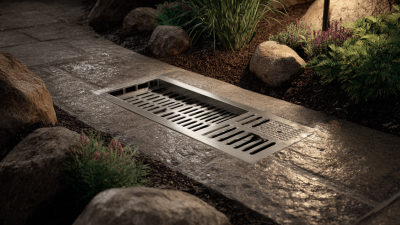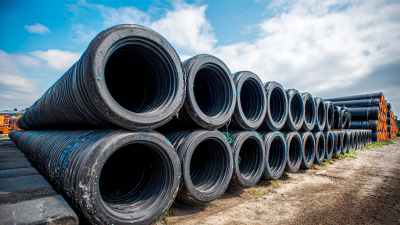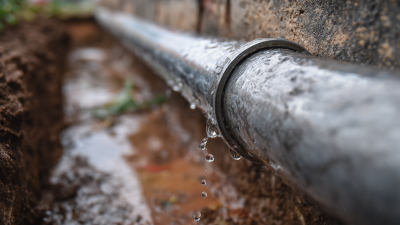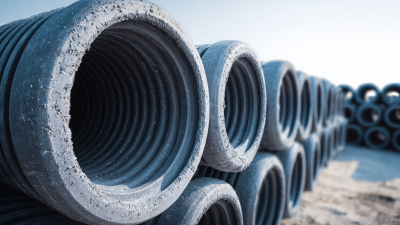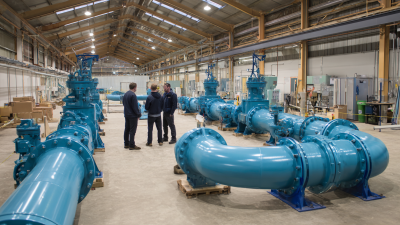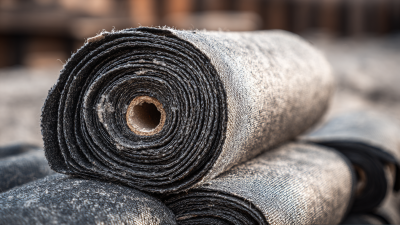 In the construction and environmental management sectors, ensuring effective water quality management is critical, particularly during rainfall events. According to the Environmental Protection Agency (EPA), sediment runoff is one of the leading pollutants in water bodies, with studies indicating that construction sites can contribute up to 90% of the total sediment load in nearby waterways.
To combat this issue, the implementation of inlet protection solutions becomes paramount. By utilizing specialized devices and systems designed to filter and capture sediments before they enter storm drains, project managers can significantly mitigate environmental impacts.
Therefore, selecting the best inlet protection measures tailored to a project's specific needs not only contributes to compliance with regulatory standards but also promotes sustainable practices, making it essential for all stakeholders to understand the various solutions available in the market.
In the construction and environmental management sectors, ensuring effective water quality management is critical, particularly during rainfall events. According to the Environmental Protection Agency (EPA), sediment runoff is one of the leading pollutants in water bodies, with studies indicating that construction sites can contribute up to 90% of the total sediment load in nearby waterways.
To combat this issue, the implementation of inlet protection solutions becomes paramount. By utilizing specialized devices and systems designed to filter and capture sediments before they enter storm drains, project managers can significantly mitigate environmental impacts.
Therefore, selecting the best inlet protection measures tailored to a project's specific needs not only contributes to compliance with regulatory standards but also promotes sustainable practices, making it essential for all stakeholders to understand the various solutions available in the market.
Inlet protection plays a crucial role in erosion control, serving as a first line of defense against sediment and pollutants entering stormwater systems. Construction sites, often subject to soil disturbance, are particularly vulnerable to erosion. When rainwater flows over these exposed areas, it can carry debris and sediment into drainage inlets, leading to water quality issues and downstream pollution. Implementing effective inlet protection measures helps to mitigate these risks, ensuring that water remains clean and reducing the environmental impact of construction activities.
Moreover, understanding the various inlet protection solutions available is essential for project success. These solutions can range from simple silt fences to more sophisticated filter fabric or sediment traps, and the choice largely depends on the site conditions and project requirements. By carefully selecting the appropriate method, project managers can not only safeguard local waterways but also comply with environmental regulations. Prioritizing inlet protection not only reflects a commitment to responsible construction practices but also fosters a sustainable approach to site management.
When selecting the best inlet protection solutions for your project, one of the most common challenges is identifying the specific site conditions. Factors such as topography, soil type, and proximity to water bodies can significantly influence the effectiveness of the chosen protection measures. For instance, in areas with heavy rainfall or flooding, a more robust solution may be necessary to prevent sediment and debris from entering the drainage system. Understanding these variables is crucial in assessing which products will provide adequate protection without causing additional problems.
Another challenge during the selection process is navigating the variety of available products. With numerous options on the market, it can be overwhelming to determine which solutions align best with your project's goals and compliance requirements. It’s important to conduct thorough research, consulting product specifications, and performance data to make informed decisions. Additionally, collaborating with experienced professionals can provide valuable insights, ensuring the chosen inlet protection methods are both effective and compliant with local regulations.
| Criteria | Importance Level | Common Challenges | Potential Solutions |
|---|---|---|---|
| Effectiveness in Sediment Control | High | Varied performance under different conditions | Conduct field tests to ensure proper function |
| Ease of Installation | Medium | Complex installation requirements | Select products with clear instructions and training |
| Durability | High | Material degradation over time | Choose materials designed for longevity |
| Compliance with Regulations | High | Changing local regulations | Stay updated with local laws and guidelines |
| Cost Effectiveness | Medium | Balancing upfront costs with long-term savings | Perform a life-cycle cost analysis |
When selecting the best inlet protection solutions for your project, it is essential to consider several key factors that can significantly impact both effectiveness and regulatory compliance. One of the foremost elements is understanding the type of sediment and pollutants that may enter the stormwater system. According to the Environmental Protection Agency (EPA), sediment is the most common pollutant in urban runoff, leading to the degradation of water quality. Choosing a protection system tailored to tackle specific contaminants—as identified in your site assessment—ensures better management of these pollutants.
Another critical factor is the design and physical compatibility of the inlet protection system with existing infrastructure. Systems need to be structurally sound, able to withstand hydraulic forces, and fit within the site’s topography. Data from the American Society of Civil Engineers (ASCE) indicates that improperly designed inlet protection can lead to failures that exacerbate erosion and sediment transport. Adhering to the recommended design guidelines and employing high-quality materials can help mitigate these risks, ensuring that the system performs efficiently throughout the project's lifecycle.
When selecting inlet protection solutions for your project, it's essential to conduct a comparative analysis of the various products available on the market. Different inlet protection products offer unique features that cater to specific needs and environmental conditions. For instance, some products are designed to effectively filter sediment and debris, while others excel in managing stormwater runoff. Evaluating key factors such as filtration efficiency, ease of installation, and maintenance requirements can significantly impact the choice of the right solution.
In addition to functionality, costs associated with different inlet protection solutions also vary widely. By assessing both the upfront costs and the potential long-term expenses related to maintenance and replacement, project managers can make informed decisions that align with budgets and project timelines. Moreover, considering the environmental impact of each product is crucial, as selecting sustainable options can enhance project compliance with regulatory standards while contributing to greener outcomes. Ultimately, a thorough comparative analysis ensures that the chosen inlet protection solution is not only effective but also economically viable and environmentally responsible.
When implementing inlet protection in construction projects, it's essential to prioritize best practices that not only ensure regulatory compliance but also promote environmental stewardship. First, proper site assessment is crucial. Understanding the landscape, drainage patterns, and potential pollutant sources will help in selecting the right protection measures. Conducting a thorough analysis allows for tailored solutions that can effectively mitigate sediment and contaminants from entering stormwater systems.
Another critical aspect is the regular maintenance and inspection of inlet protection devices. It's important to create a maintenance schedule that includes frequent checks to ensure that barriers and filters are functioning correctly. Removing debris and sediment buildup promptly will enhance their effectiveness and prolong their lifespan. Additionally, educating the construction team about the significance of inlet protection can foster a culture of responsibility, ensuring that everyone is aware of the practices needed to safeguard water quality throughout the project duration.
